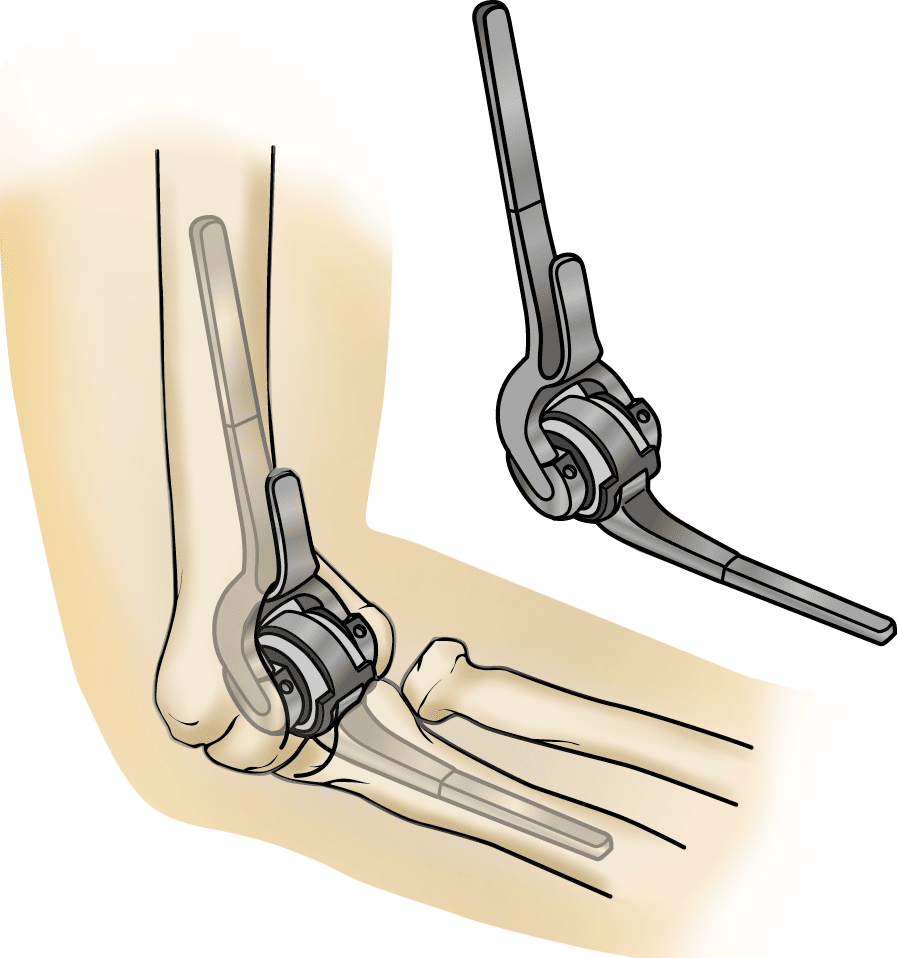elbow replacement

Elbow replacement surgery removes damaged areas of the elbow joint and replaces them with parts made of metal and plastic (implants). This surgery is also called elbow arthroplasty.
Three bones meet in the elbow. The upper arm bone (humerus) connects like a loose hinge to the larger of the two forearm bones (ulna). The two forearm bones (radius and ulna) work together to provide rotation.
Traditionally, elbow replacement surgery has had a higher rate of complications than surgeries to replace hip or knee joints. But recent advances in surgical technique and implant design have improved the success rate of elbow replacements.
Your elbow can be damaged by conditions ranging from arthritis to fractures and other injuries. In many cases, the damage from arthritis and fractures can be surgically repaired. However, if the damage is too severe, replacement is typically better.
Pain and loss of motion are the most common reasons people choose to have elbow replacement surgery.
Conditions that can damage the joint include:
In some cases, you may need a replacement of just one portion of the joint. For example, if only the head of one of your forearm bones (radius) is damaged, it can be replaced with an artificial head.
If the entire joint needs to be replaced, the ends of the bones that come together in the elbow will be reshaped. Bones are hard tubes that contain a soft center. The long, slender ends of the artificial parts are inserted into the softer central part of the bones.
If the surrounding ligaments aren't strong enough to hold the joint together by themselves, the surgeon may use a linking cap so that the artificial implants can't come apart.